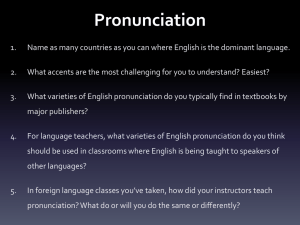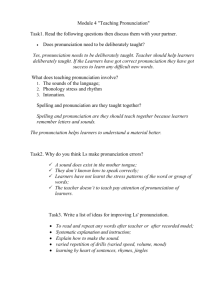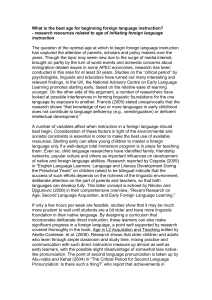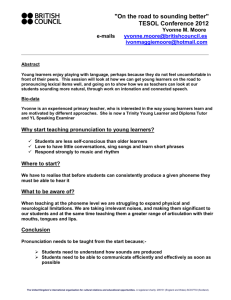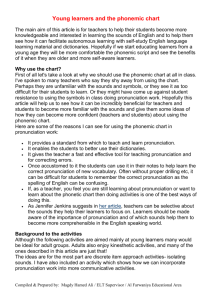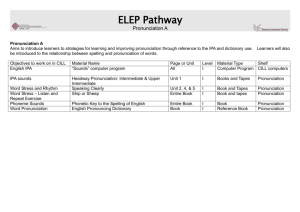Module 4 "Teaching Pronunciation"
advertisement
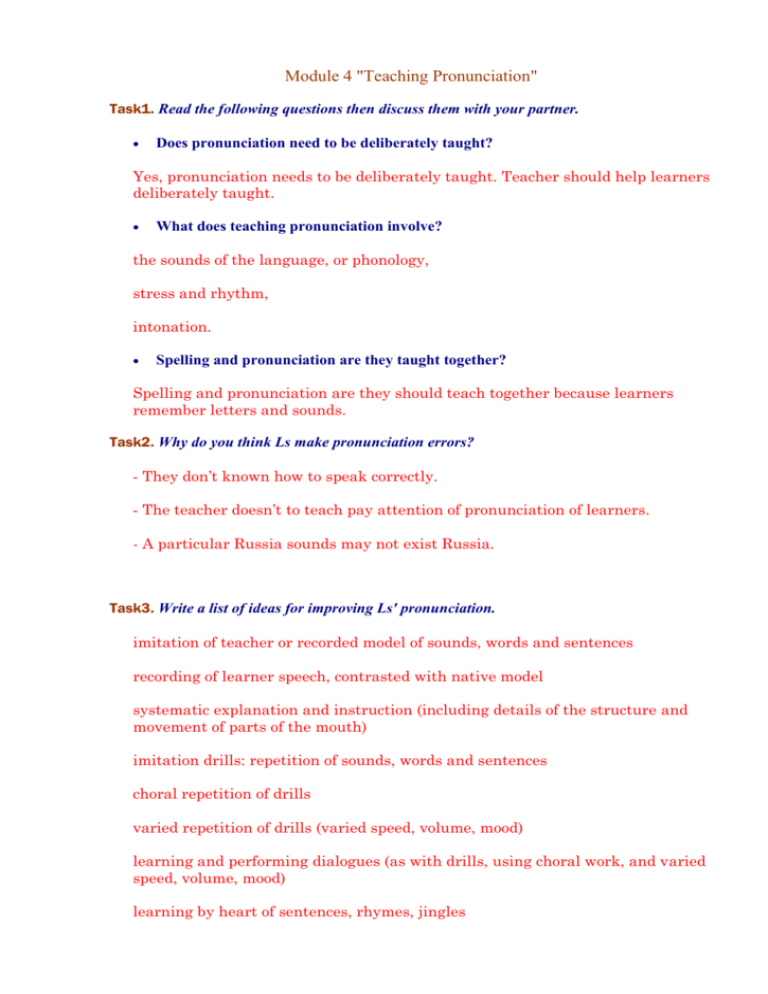
Module 4 "Teaching Pronunciation" Task1. Read the following questions then discuss them with your partner. Does pronunciation need to be deliberately taught? Yes, pronunciation needs to be deliberately taught. Teacher should help learners deliberately taught. What does teaching pronunciation involve? the sounds of the language, or phonology, stress and rhythm, intonation. Spelling and pronunciation are they taught together? Spelling and pronunciation are they should teach together because learners remember letters and sounds. Task2. Why do you think Ls make pronunciation errors? - They don’t known how to speak correctly. - The teacher doesn’t to teach pay attention of pronunciation of learners. - A particular Russia sounds may not exist Russia. Task3. Write a list of ideas for improving Ls' pronunciation. imitation of teacher or recorded model of sounds, words and sentences recording of learner speech, contrasted with native model systematic explanation and instruction (including details of the structure and movement of parts of the mouth) imitation drills: repetition of sounds, words and sentences choral repetition of drills varied repetition of drills (varied speed, volume, mood) learning and performing dialogues (as with drills, using choral work, and varied speed, volume, mood) learning by heart of sentences, rhymes, jingles jazz chants (see Graham, 1978) tongue twisters self-correction through listening to recordings of own speech Task4. Imagine that you want to focus on a sound which students find difficult. Which of these steps are most important? Which are not necessary? - Say the sound alone. - Say the sound in a word. - Contrast it with other sounds. - Write words on the board. - Explain how to make the sound. - Get students to repeat the sound in chorus. - Get individual students to repeat the sound. I think these sentences are very important on the lesson: - Say the sound alone Write words on the board. Say the sound in a word. Get students to repeat the sound in chorus Contrast it with other sounds. I think these sentences are not necessary on the lesson. - Get individual students to repeat the sound Explain how to make the sound Task5. Write a list of ideas for pronunciation-spelling correspondence. - Dictation: of random lists of words, of words that have similar spelling problems, of complete sentences, of half-sentences to be completed. - Reading aloud: of syllables, words, phrases, sentences. - Discrimination (1): prepare a set of 'minimal pairs' - pairs of words which differ from each other in one sound-letter combination (such as dip-deep in English). Either ask learners to read them aloud, taking care to discriminate, or read them aloud yourself, and ask students to write them down. - Discrimination (2): provide a list of words that are spelt the same in the learners' mother tongue and in the target language: read aloud, or ask learners to, and discuss the differences in pronunciation (and meaning!). - Prediction (1): provide a set of letter combinations, which are parts of words the learners know. How would the learners expect them to be pronounced? The'n reveal the full word. - Prediction (2): dictate a set of words in the target language which the learners do not know yet, but whose spelling accords with rules. Can they spell them? (Then reveal meanings.)

